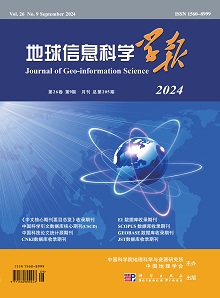Model Analysis of Upper Digestive Tract Cancer and Environmental Pollution in Huaihe River Watershed
引用次数: 4
Abstract
The Huaihe River watershed has been suffering from industrial point pollution and other non-point pollution since 1970s.The media has reported the emergence of 'cancer village'.Spatial distribution pattern on upper digestive tract cancer and environmental factors was studied in 14 pilot counties including 5810 villages in Huaihe River watershed.From the multiple perspectives such as watershed and jurisdictional areas,Ordinary Least Squares(OLS) and Robust regression model were used for environmental factors selection.Robust regression model can detect abnormal value and put the weight for each of them.Surface water,phreatic water,river density,soil PAHs,fertilizer,population density and economical density(GDP) were imported into the model.Geographically Weighted Regression(GWR) model was used to locally detect the impact of different environmental factors on Empirical Bayes smoothed upper digestive tract cancer mortality.Through the correlative analysis of them,the risk assessment model of upper digestive tract cancer mortality was developed.Based on the regression coefficient of each environmental factor and statistical test in each pilot,the local main environmental factors were extracted.Even six factors were imported into the global regression model,the impact of each factor was different in distinct areas.In general,all the selected environmental factors show the positive correlation with the upper digestive tract cancer mortality except the surface water quality level and GDP.However the pollution type was diverse in different area based on the regression coefficient of each factor.The main findings were listed as follow: fertilizer amount,soil PAHs,GDP and river density are the main factors in Jiangsu segment in Huaihe River watershed;main factors in Anhui segment included soil PAHs and fertilizer amount;main factors in Henan segment included phreatic water,river density and fertilizer amount,With Shenqiu County,as one of the pilots in Henan,showed the strong positive correlation between surface water and cancer mortality;some kind of environmental risk factors were also detected in Shandong segment,but the result showed no correlation between these risk factors and cancer mortality,which needed to be studied any further.淮河流域上消化道肿瘤与环境污染的模型分析
自20世纪70年代以来,淮河流域一直遭受工业点源污染和其他非点源污染。媒体报道了“癌症村”的出现。研究了淮河流域14个试验县(5810个村)上消化道肿瘤的空间分布格局及环境因子。从流域和管辖区域等多个角度,采用普通最小二乘(OLS)和稳健回归模型进行环境因子选择。鲁棒回归模型可以检测出异常值,并对每个异常值赋予权重。模型中引入地表水、地下水、河流密度、土壤多环芳烃、肥料、人口密度和经济密度(GDP)。采用地理加权回归(GWR)模型局部检测不同环境因素对经验贝叶斯平滑上消化道癌症死亡率的影响。通过对两者的相关性分析,建立了上消化道肿瘤死亡率风险评估模型。根据各环境因子的回归系数和各试点的统计检验,提取出当地的主要环境因子。即使在全球回归模型中引入6个因素,每个因素在不同区域的影响也是不同的。总体而言,除地表水水质水平和GDP外,所选环境因子均与上消化道肿瘤死亡率呈正相关。但各因子的回归系数表明,不同地区的污染类型存在差异。主要研究结果如下:淮河流域江苏段主要影响因子为土壤多环芳烃、土壤多环芳烃、GDP和河流密度,安徽段主要影响因子为土壤多环芳烃和肥料量,河南段主要影响因子为潜水水、河流密度和肥料量,河南省试点之一的沈丘县地表水与癌症死亡率呈较强的正相关,山东段也检测到一些环境危险因素,但淮河流域的环境危险因素较少结果显示这些危险因素与癌症死亡率之间没有相关性,有待进一步研究。
本文章由计算机程序翻译,如有差异,请以英文原文为准。
求助全文
约1分钟内获得全文
求助全文
来源期刊
CiteScore
2.70
自引率
0.00%
发文量
3757
期刊介绍:
Journal of Geo-Information Science is an academic journal under the supervision of Chinese Academy of Sciences, jointly sponsored by Institute of Geographic Sciences and Resources, Chinese Academy of Sciences and Chinese Geographical Society, and also co-sponsored by State Key Laboratory of Resource and Environmental Information System, Key Laboratory of Virtual Geographic Environment of Ministry of Education and Key Laboratory of 3D Information Acquisition and Application of Ministry of Education. Founded in 1996, it is openly circulated in the form of a monthly magazine.
Journal of Geoinformation Science focuses on publishing academic papers with geographic system information flow as the main research object, covering research topics such as geographic information cognitive theory, geospatial big data mining, geospatial intelligent analysis, etc., and pays special attention to the innovative results of theoretical methods in geoinformation science. The journal is aimed at scientific researchers, engineers and decision makers in the fields of cartography and GIS, remote sensing science, surveying and mapping science and technology. It is a core journal of China Science Citation Database (CSCD), a core journal of Chinese science and technology, a national Chinese core journal in domestic and international databases, and it is included in international databases, such as EI Compendex, Geobase, and Scopus.

 求助内容:
求助内容: 应助结果提醒方式:
应助结果提醒方式:


